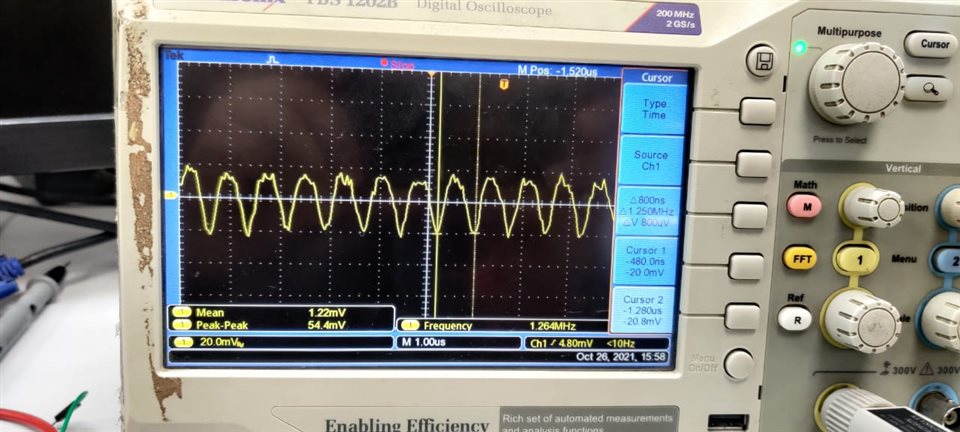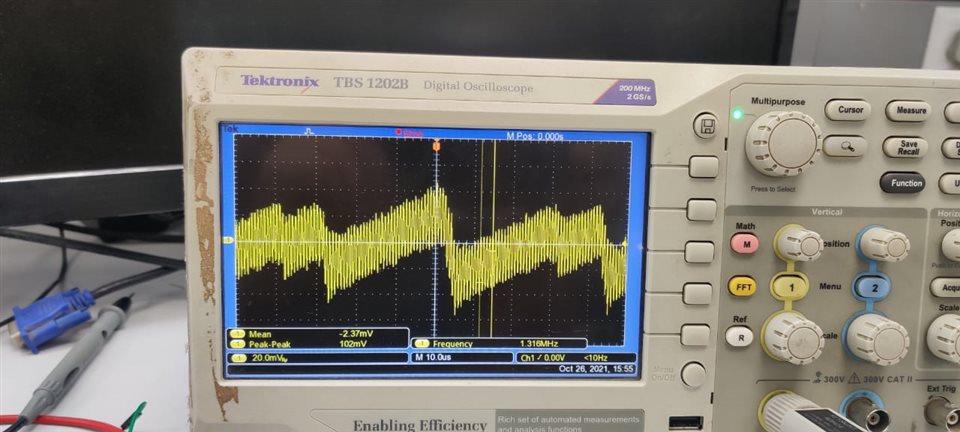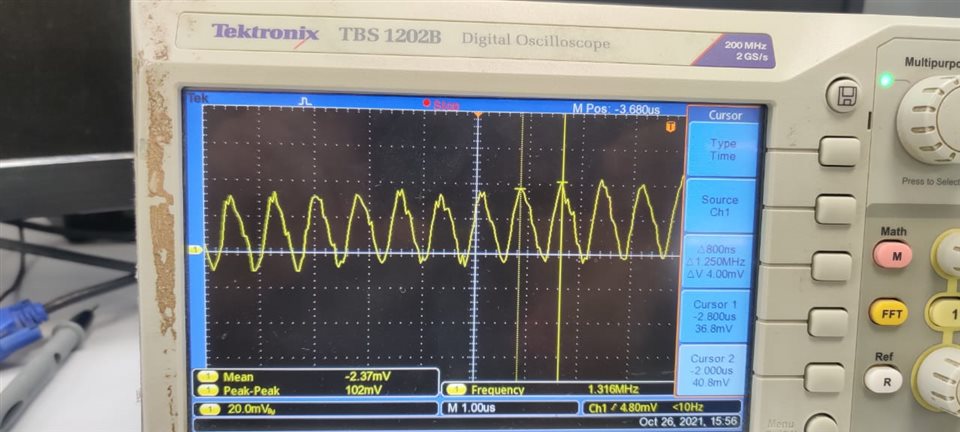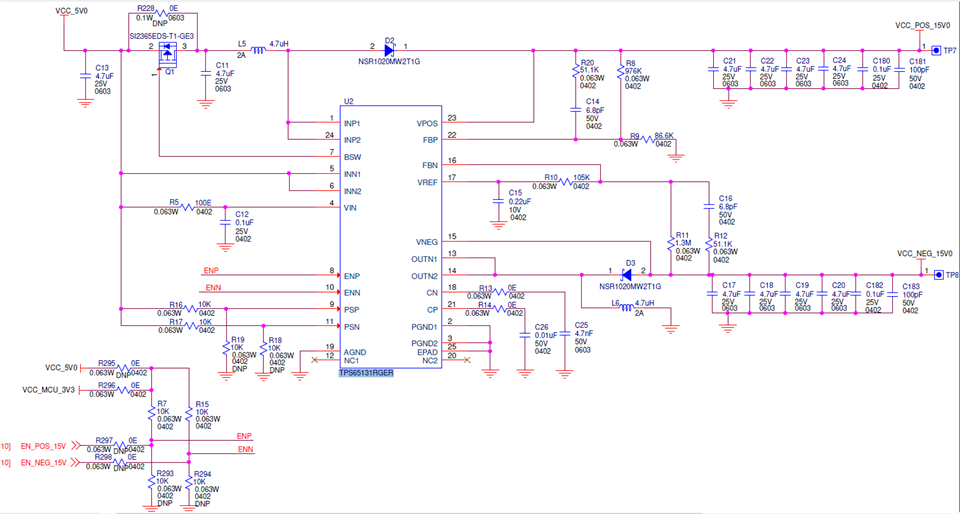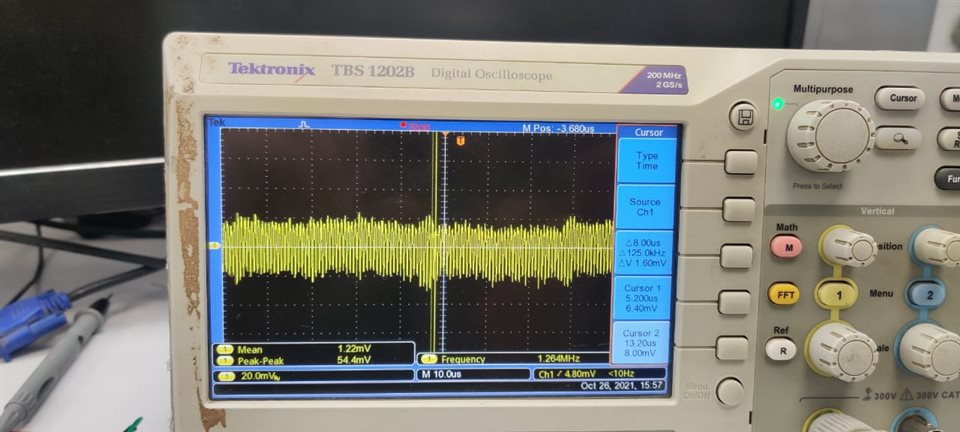Hi...
One of my customer is using TPS65131 for 5V input , +/-15V output configuration. They have an application where load current is very small (most of the time load will be 2mA & during relay drive +15V draws 200mA for 100mS).
With the fresh board or fresh device on the same board, design is working fine & no issue observed. Over a period (running for 8 to 9 days), part behaves strangely & output develops the noisy output (ripple of 1.25MHz - looks like switching ripple). Customer has tried with both forced PWM & pulse skipping but not improving.
Pls. find the attached waveforms & schematic.
Pls. help resolving the same.
Mitesh
